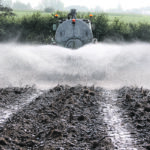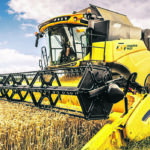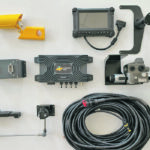Copper has been used in agriculture as a micronutrient and a fungicide for decades. As a micronutrient, crops need copper to make proteins and carbohydrates as well as lignins, which are essential to stem strength. With a price tag approaching $14 per acre, copper probably isn’t ordered as often as it should be. Pro Ag […] Read more
Stories by Ron Lyseng

Oxygen dissipates slurry smell
Other fun facts:
Air pumped into slurry tanks mixes the manure. Rising air bubbles promote aerobic bacteria, which digests toxins, fatty acids and ammonia. This reduces manure’s biological oxygen demand and reduces odour. That’s the concept upon which the Irish-based Dairy Power company based their Smart Manure Aeration system. Adam Steward of Dairy Power in Canada says the […] Read more
Treatment project creates potable water from poop
One of the first companies to take a serious look at disassembling slurry was Livestock Water Recycling. These Calgary-based researchers began developing their mechanical-chemical treatment technology 15 years ago. All wastewater recycling projects are challenged with disassembling slurry to break it down into individual components. The LWR website states that their basic process uses mechanical […] Read more

Surplus milk: dump it or soil-apply as fertilizer?
COVID-19 forced major milk purchase cutbacks by schools, restaurants, hotels, grocery chains and consumers. Supply management normally keeps the balance, but COVID blasted supply and demand right out of sync. There are currently more jobless Canadians than usual and an unemployment rate hovering around 10 percent. According to Statistics Canada young people, women and workers […] Read more

Self-guided Russian combines cut 400,000 acres GPS-free
The Cognitive Agro Pilot combine follows the crop edge within a four-inch tolerance and farms reduce labour
Folks who doubt the viability of autonomous field implements should take a good look at videos showing more than 350 combines of all brands helping harvest the 2020 Russian crop. Last fall, a mix of more than 350 New Holland, John Deere, Claas and Russian-built combines were outfitted with Cognitive Agro Pilot autonomous driving systems. […] Read more
When will drivers vacate the cab?
At a price of US$10,000 there may be some prairie producers chomping at the bit to install a Cognitive Agro Pilot this year
Every prairie farmer who’s given even a passing thought to the idea of autonomous tractors has questioned whether it’s possible, or even desirable, to remove the driver from the cab. Even if the machine has the capability to be fully autonomous, the safety factor remains the biggest argument for keeping a driver in the cab […] Read more
Cognitive tech talk: Single camera, NVIDIA
Olga Uskova says the Cognitive Agro Pilot kit sells for US$10,000 and consists of five main components: Control unit with neuroprocessor (NVIDIA TX2) for autonomous driving. It contains the main stack of algorithms, processes the video feed and issues commands to the CAN bus Two megapixel armoured colour video camera Display tablet in cab, which […] Read more

Planter calibration critical to seeding ROI
Research during the past two decades tells corn growers that seed spacing, seed singulation and seed placement are critical factors in extracting top returns on that big input investment. The most important task in any cropping system is to place the seed at the correct spot for the conditions. This task is especially important when […] Read more
MeterMax: how it works
Grand River Planters in Caledonia, Ont., has been providing customers with MeterMax calibration for years, said Grand River’s Thomas Snyder. The Meter Max Ultra test stands lets Grand River Planters (GRPP) test any brand or type of meter. The Ultra drives the meter at the same speed and population the grower has dialed in. The […] Read more

Bugs: always eager to eat and ready to hide
You don’t even know they were in your crop until after they’ve had their free lunch and moved on over to your neighbour’s
Insects are always eager to decimate pulse crops. There’s a wide array of the destructive little bugs, and they go about doing their damage in a number of different ways. Their timing, devious behavior and variety of modes of action make outbreaks difficult to predict with a high degree of accuracy, according to entomologists. “And […] Read more




